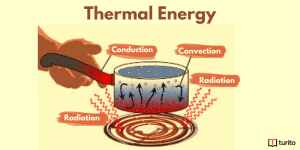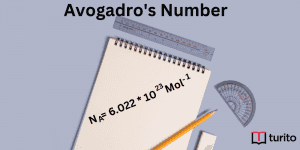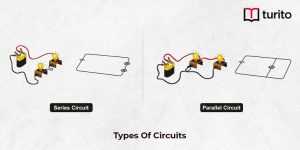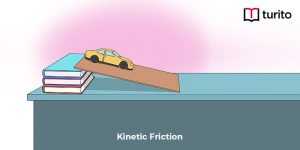In real life, there are many surfaces which are symmetric and non-symmetric. The main symmetric surfaces like a sphere, cylinder, and pillbox are known as Gaussian surfaces. The flux through these surfaces is calculated by the law called Gauss law. This Gauss law is based on a theorem known as the Gauss theorem.
To calculate the generally total amount of the source quantity enclosed—for example, the amount of gravitational mass as the source of the gravitational field or the amount of sort of electric charge as the source of the electrostatic field—Gauss law, for the most part, is used in conjunction with an arbitrary essentially closed surface, S = V, which mostly is fairly significant.
What Is A Gaussian Surface?
The closed surface in three-dimensional space is known as the Gaussian surface. In three-dimensional space, the flux of the vector field is calculated on the Gaussian surface. The vector fields in space can be magnetic, gravitational, or electric fields.
The Gaussian surface is calculated by using the Gauss law.
A formula for the Gaussian surface calculation is:

Here Q (V) is the electric charge contained in the V.
When calculating the surface integral, Gaussian surfaces are often carefully selected to take advantage of the symmetry of the scenario. The computation will not need challenging integration since the constants may be omitted from the integral.
If the Gaussian surface is selected so that the component of the electric field along the normal vector is constant for every point on the surface. One may compute the flow of a vector field on this surface, which is represented as being closed and three-dimensional.
Gauss Law
What is Gauss law?
The total flux associated with a closed surface is equal to 1/ɛo times the charge it encloses, per Gauss’s equation.

For instance, a cube with the edge “a” is enclosed by a point charge designated q. According to Gauss’ law, the flux across each cube face is now q/6ɛo
The fundamental idea in understanding electricity is the electric field. Coulomb’s law is typically used to compute the electric field of a surface. However, understanding the idea of Gauss law is necessary to calculate the electric field distribution on a closed surface. It describes the electric charge contained within a closed surface or the electric charge existing there.
Gauss Law Formula
The total charge contained inside a closed surface is inversely proportional to the total flux contained within the surface according to the Gauss theorem. I ɸ t is the total flux and ɛo is the electric constant. Therefore, the total electric charge Q contained by the surface is Q = ɸɛo
The final Gauss law formula is given by: ɸ = Q/ɛo
Here,
Q = total charge within the given surface
ɛo= electric constant
Common Gaussian Surfaces
The common Gaussian surfaces are three surfaces. Those are spherical, cylinder, and pillbox. The flux is calculated using a different charge distribution on the surface at different angles. Using the different charge distributions, the surface’s flux value changes, which are different on different surfaces.
Spherical Surface
When one of the following causes produces a flux or electric field on the surface of the spherical Gaussian surface:
- A point charge
- A sphere with a consistent charge distribution
- Symmetrical charge distribution with a sphere
Consider a spherical shell S with a radius R, a uniform distribution of charge Q, and a minimum thickness. Using Gauss law, determine the electric field E at a distance of r from the charged shell’s center. The electric field strength and net flow on the Gaussian surface are zero.
The flux from the spherical surface S with radius r of the surface area is given as follows:

(Flux using Gauss law)

The spherical distribution of charge is depicted in the equation above, which serves as a point charge verifying Coulomb’s law.
Gauss Law Cylinder
When any of the following causes an electric field or flux to form on the surface of a cylindrical Gaussian surface:
- Charge distribution that is constant along an endless line.
- Charge uniformly distributed on an endless plane.
- Even distribution of charge along an endless cylinder.
Consider a point charge P with a charge density of an infinite line charge that is located at a distance r. The line charge serves as the cylinder’s axis of rotation, and the charge contained inside the cylinder is as follows in a kind of major way , q = λh
The flux of cylinder surface is:
![]()
The fluxes of the cylinder surface change with different vectors on the surface.
The Gaussian surface formula of cylinder surface with uniform distribution of charges through the surface is:

Gaussian Pillbox
The surface with an infinite charge and a uniform charge density is called the Gaussian box, and it is specifically used to calculate the electric field in a sort of big way. Take the cylindrical box, made up of three parts: the side, the disc at one end with the area, and the disc at the other end with definitely equal area, or so they thought. Gauss law states that the total electric flux passing through each component is directly proportional to the charge present in the box.
Gaussian Surface Equations Of Spherical, Cylindrical. Pillbox
| Type of surface | Equation |
| The Gaussian surface of the sphere |  |
| The Gaussian surface of the cylinder |  |
Uses Of Gaussian Surface
- A Gaussian surface is a contained surface in three dimensions used to determine the flux of a vector field (gravitational field, the electric field, or magnetic field.) Because of the uniform distributed charge, the Gaussian surface aids in determining the strength of the electric field subtly.
- A cylindrical Gaussian surface is used to determine the actual electric flux or field produced by an infinitely long, uniformly charged line, an infinitely wide, evenly charged plane, and an infinitely long, uniformly charged cylinder.
- A spherical Gaussian surface is employed to calculate the electric flux or field produced by the points’ charge, a spherical shell of uniformly distributed charge, and any other symmetric charge distribution aligned spherically.
- The charge density displays a planar symmetry when charges, for the most part, are uniformly dispersed over a big, definitely flat surface, or so they thought. The calculation of the fairly electric flux surrounding the sheet or plane in this situation involves a Gaussian surface with a uniformly charged plane in a particularly big way.
Properties Of Gaussian Surface
The fundamental properties of a Gaussian surface are mostly as follows:
- It should have a closed surface that allows for basically easy differentiation between points inside, on, and outside the surface in a very big way.
- The area over which the electric field will be computed must, for the most part, be traversed by this surface in a generally major way.
- The surface must be designed to, for the most part, match the symmetry of the source so that the field is constant in amplitude and normal to the surface at all places.
Conclusion
When calculating the surface integral, Gaussian surfaces are often carefully selected to take advantage of the symmetry of the scenario. The computation will not need challenging integration since the constants that occur may generally be omitted from the integral in a fairly major way.
If the Gaussian surface is essentially selected, the component of the particular electric field along the normal vector is constant for every point on the surface. It is described as a three-dimensional surface, which is closed and where one may calculate the flow of a vector field in a pretty big way.
Frequently Asked Questions
1. If the Gaussian surface’s radius enclosing a charge is halved, how does the change in the electric flux passing through the Gaussian surface?
A. The electric flux given for a closed Gaussian surface, which is quite significant, is:
Flux = Q/ɛo
Here,
E is the electric field,
S is any closed surface,
Q is the total electric charge inside the surface S,
ɛo= electric constant
If the charge is half, flux is automatically halved as well, but it depends solely on the charge on the Gaussian surface and not on the radius of the surface, or so they kind of thought.
2. A charge Q is spread uniformly on the surface of a hollow metallic sphere which has a charge Q/2 at its center. What is the electric flux through the sphere?
A. By using the Gauss theorem, calculate the electric flux of the sphere
Electric flux is equal to, ES = Q/ɛo
Here,
S is the Gaussian surface area of the sphere, S = 4𝝅r2
The total charge within the Gaussian surface is equal to 
The final electric flux of the sphere is equal to 3Q/2ɛo.
3. Why is it impossible for a charge to lie on a Gaussian surface?
A. Contrary to your assumption, charges can be placed on Gaussian surfaces. Theoretical surfaces in space with no impact charges that may be positioned practically anywhere are called Gaussian surfaces.
A Gaussian surface should not kind of pass through any discrete charge in a system of charges, or so they thought. It’s because the electric field at any charge’s location isn’t properly defined.

Relevant Articles
Understanding Thermal Energy: What It Is and How It Works
Thermal energy is essential to our daily lives, from warming …
Understanding Thermal Energy: What It Is and How It Works Read More »
Read More >>Avogadro’s Number: Meaning, Importance, and More
Introduction The concept of measuring the microscopic particles that make …
Avogadro’s Number: Meaning, Importance, and More Read More »
Read More >>Kinetic Friction – Definition, Laws, Types
Kinetic Friction Kinetic force is a force acting between two …
Kinetic Friction – Definition, Laws, Types Read More »
Read More >>




















Comments: